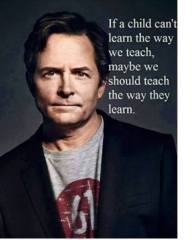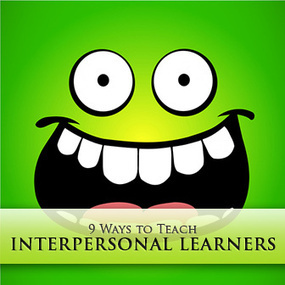 In my previous post, I focused on the use of songs and videos in order to make the learning experience in the classroom more similar to the reality of our students outside the classroom. In this post, I will examine how other aspects, such as video games, can be brought into the classroom, and look beyond the graphic to see how to incorporate other learning experiences into our repertoire.
In my previous post, I focused on the use of songs and videos in order to make the learning experience in the classroom more similar to the reality of our students outside the classroom. In this post, I will examine how other aspects, such as video games, can be brought into the classroom, and look beyond the graphic to see how to incorporate other learning experiences into our repertoire.
Gamification
The comments which accompanied the original graphic (above) focused almost exclusively on video games as a way of learning English, although the focus seemed to be more a reminiscence of games which the people had enjoyed than a coherent explanation of how the games had in fact helped the person to learn English. However, there is a movement to introduce ideas taken from the gaming world into the classroom, an approach referred to as ‘gamification’.
One of the main areas in which gamification is being applied to education, as we have seen in the video, is assessment. It is argued that the shift from marking negatively to a system where marks are accumulated like experience points is highly motivational. An example of how to organise activities in this way can be found in Rose Bard’s ELT Blog. But there are other aspects of classroom life where gamification can be applied, such as classroom management.  Many years ago, I worked with a teacher who had her class divided into teams and during her lesson she awarded points to the different teams according to how they achieved the objectives she proposed. She used to record the points on the blackboard, but today’s teachers have alternatives available which are more appealing to their video-game-playing pupils – for example, Class Dojo. With this programme, students can choose and personalise their own avatars, and the teacher can assign points for different actions. Each student can access his / her profile and keep track of their progress, and what is more, parents can also access the profile and see how their children are doing at school, all in real time. More importantly, this programme is used to modify the behaviour of the students in a way which motivates them, rather than imposing norms.
Many years ago, I worked with a teacher who had her class divided into teams and during her lesson she awarded points to the different teams according to how they achieved the objectives she proposed. She used to record the points on the blackboard, but today’s teachers have alternatives available which are more appealing to their video-game-playing pupils – for example, Class Dojo. With this programme, students can choose and personalise their own avatars, and the teacher can assign points for different actions. Each student can access his / her profile and keep track of their progress, and what is more, parents can also access the profile and see how their children are doing at school, all in real time. More importantly, this programme is used to modify the behaviour of the students in a way which motivates them, rather than imposing norms.
However, perhaps the most important aspect of gamification is in the approach to the class itself on the part of teachers and students alike. The essence of the video game experience is that the player explores and investigates, learning and honing skills as they go. If they fail at a level, they can repeat it, using the knowledge they gained on previous failed attempts to improve their performance.  They also have the opportunity to cooperate with friends, either by discussing the games or increasingly by playing together in a multi-player format. Our objective as teachers, then, would be to recreate these conditions in the classroom, proposing challenges or problems which our students have to solve, then providing the scaffolding they need as they work through them. Clearly this is very different to the traditional format of class which we are accustomed to, and it can be difficult to adapt to it, but it can pay dividends. I think it is particularly important for students to try again if they do not succeed first time. Too often when we correct an exercise we give the correct answers, then ask who got them right. An approach I have developed is to ask them what answer(s) they have, and if they do not all agree on the right answer, I ask them to think again, talking it over with their peers, rather than give them the answer directly. This allows them to explain the reasons for their answers and hear counter-arguments, analyse more closely the question and practise reaching a consensus.
They also have the opportunity to cooperate with friends, either by discussing the games or increasingly by playing together in a multi-player format. Our objective as teachers, then, would be to recreate these conditions in the classroom, proposing challenges or problems which our students have to solve, then providing the scaffolding they need as they work through them. Clearly this is very different to the traditional format of class which we are accustomed to, and it can be difficult to adapt to it, but it can pay dividends. I think it is particularly important for students to try again if they do not succeed first time. Too often when we correct an exercise we give the correct answers, then ask who got them right. An approach I have developed is to ask them what answer(s) they have, and if they do not all agree on the right answer, I ask them to think again, talking it over with their peers, rather than give them the answer directly. This allows them to explain the reasons for their answers and hear counter-arguments, analyse more closely the question and practise reaching a consensus.
The most radical form of gamification for the classroom is the creation of actual games which put your students into situations, either individually or in groups, where they have to communicate in English in order to progress. There are various  games of this kind already on the market, in which the student takes on the role of a character and has to use his/ her language skills to negotiate their way through a game world in order to achieve an objective. A good example of this genre is Pulitzer, a game in which the student takes on the character of a journalist who is set various assignments.
games of this kind already on the market, in which the student takes on the role of a character and has to use his/ her language skills to negotiate their way through a game world in order to achieve an objective. A good example of this genre is Pulitzer, a game in which the student takes on the character of a journalist who is set various assignments.
Other games and activities are available on the internet, so we don’t have to have lots of free time in order to develop a game ourselves. For a list of resources available for language learners of all levels, click here. It’s a good idea to contact the publishing companies too, as they are increasingly producing more game-based online elements to complement the text books they provide.
A step further…
Both this post and the previous one have focused on introducing new elements into the classroom in an attempt to increase the motivation of our students. However, some experts advocate going further and introducing a completely new way of approaching the class as a response to what they see as the failings of the traditional classroom.
Cooperative learning
One of the results of advances in neurological science is that we have a clearer idea of how we learn, and this is washing back into how we teach. Cooperative learning claims to provide ‘brain friendly learning’ for our students, and incorporates various recent methodological ideas. In the cooperative classroom, students are grouped in mixed-ability teams, typically of four, and the lessons are designed in such a way that students are given opportunities to interact within their teams in a structured way. The key difference between this approach and group work is that students in a cooperative team each have a defined role within the structured interaction, and so are obliged to participate in order to complete the task.
The main principles behind cooperative learning are these:
- The members of the team must work together, and are interdependent.
- Each individual member of the team should have personal responsibility for his / her part of the work and should be accountable to the team and to the class for their work,
- All members of the team must have equal opportunities to participate.
- Work can be realised simultaneously in different teams, allowing more students to be actively engaged on a task at any one time.
The flipped classroom
One of the most radical advances in methodology has been made possible by advances in technology and by its widespread availability. The concept of the flipped classroom rose from ventures such as The Khan Academy, where the actual teaching, or instruction, is delivered via recordings online which students study at their own pace for homework, freeing up class time for guided practice exercises and problem solving. The advantages are that the teacher is primarily available in the classroom for individual support, able to work with students one-on-one or in small groups while the others are engaged in the activities, and students can repeat parts of the instructuion until they understand it, even revisiting the ‘class’ later on to refresh their memories. Here is a video which explores the concept of the flipped classroom:









 ‘ to illustrate different regional British accents, although fully accepting that even a Proficiency group would have difficulties follwing Jimmy Nail in full flow!
‘ to illustrate different regional British accents, although fully accepting that even a Proficiency group would have difficulties follwing Jimmy Nail in full flow! 






